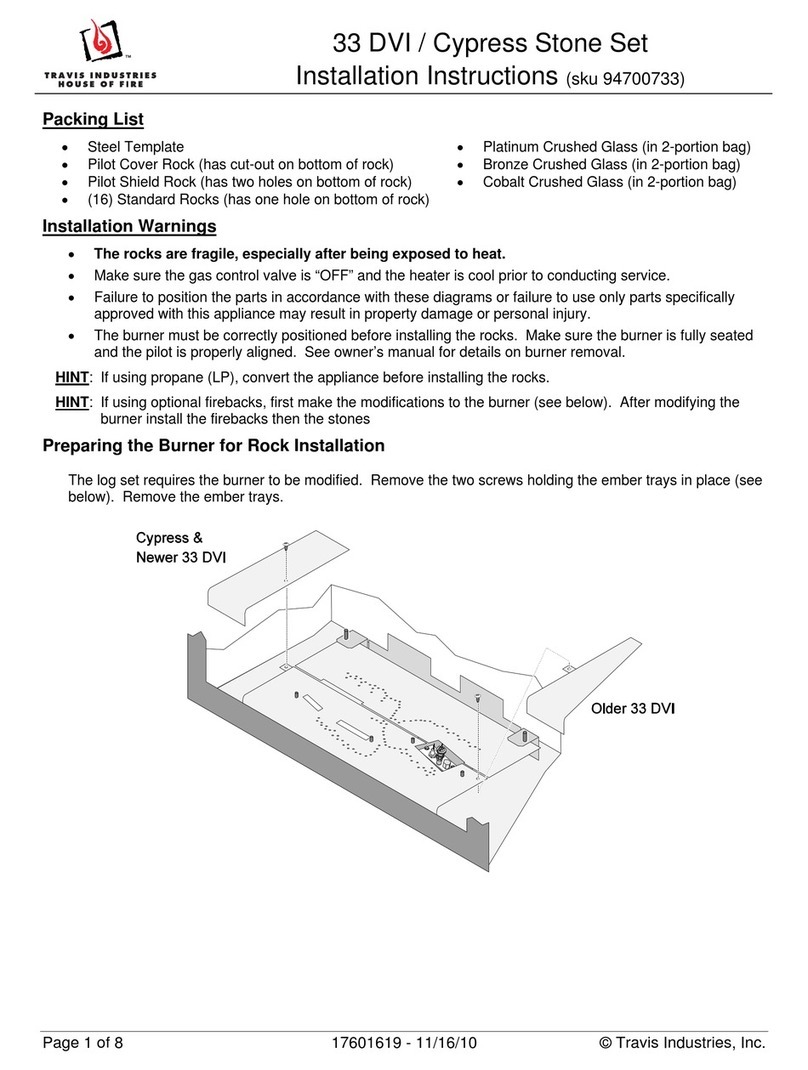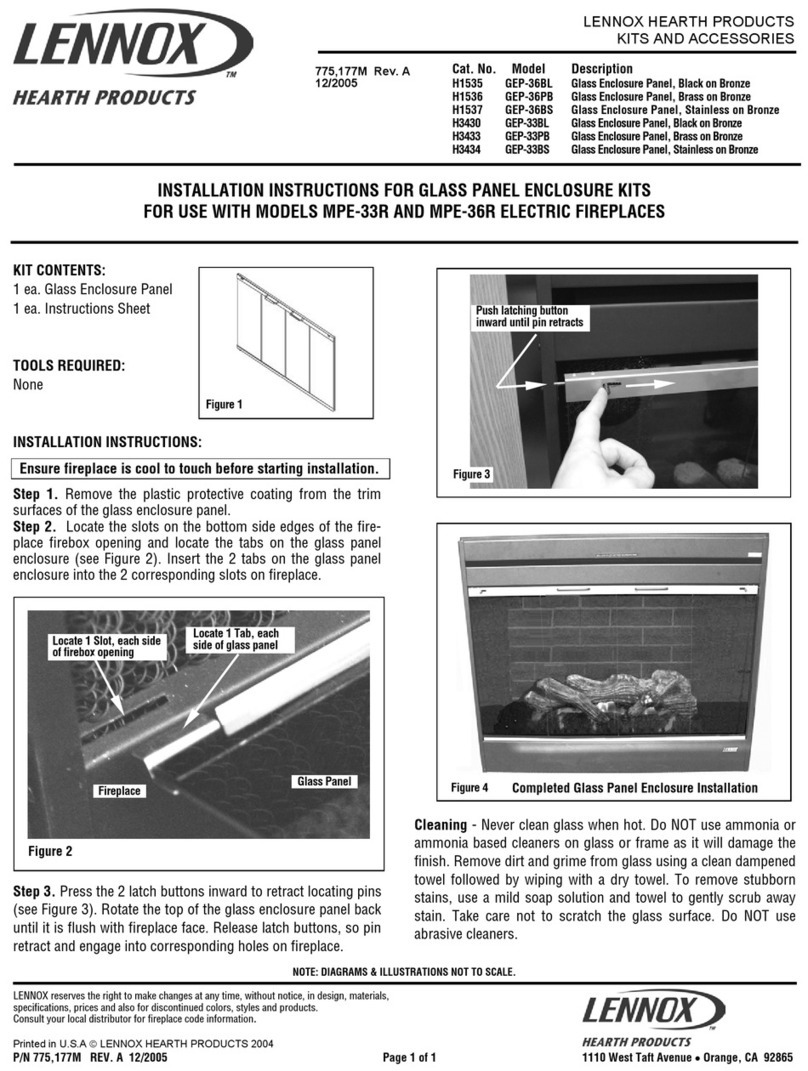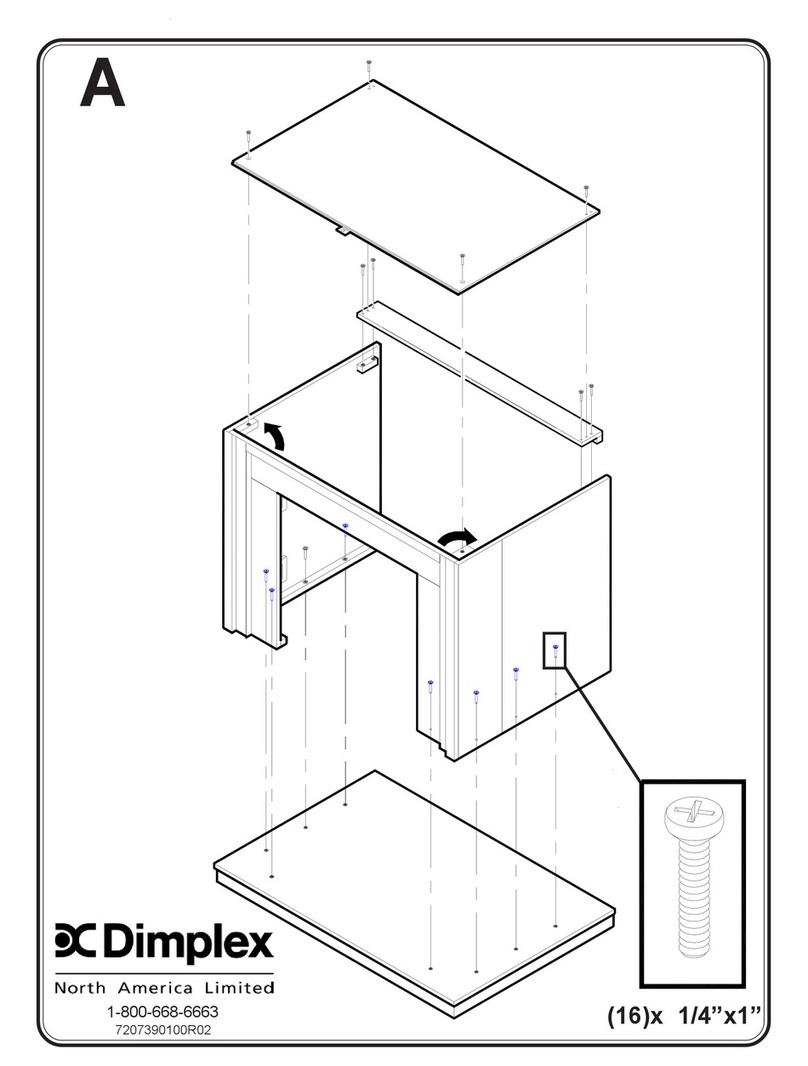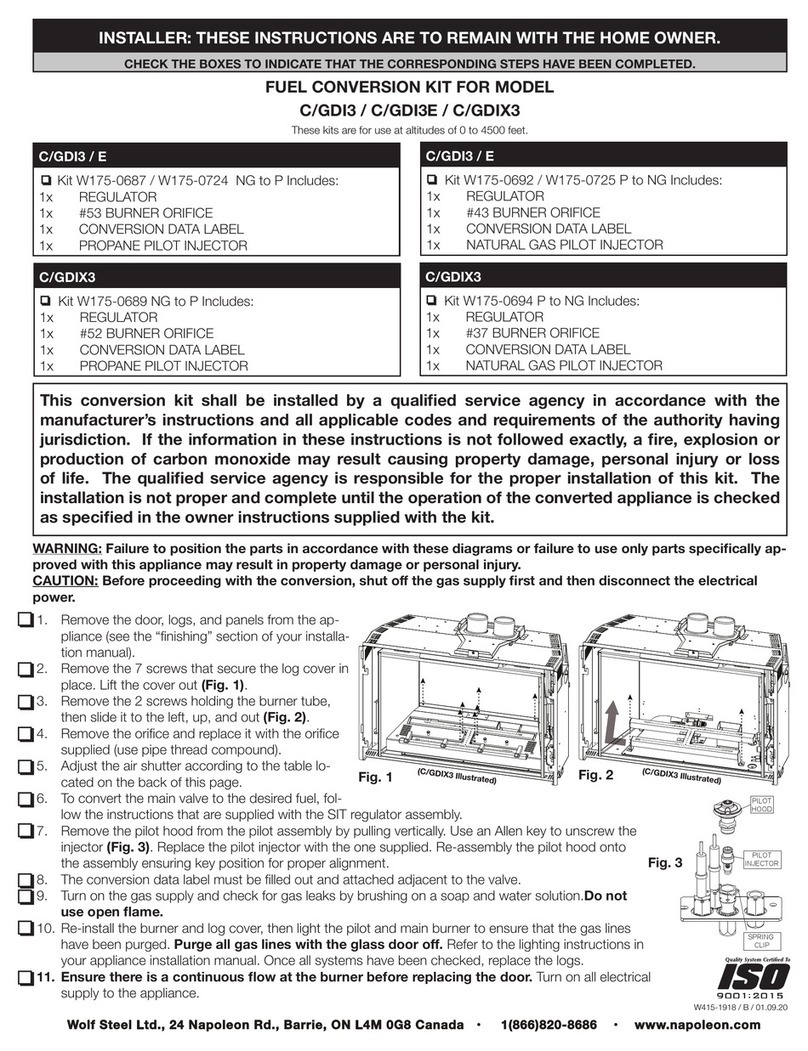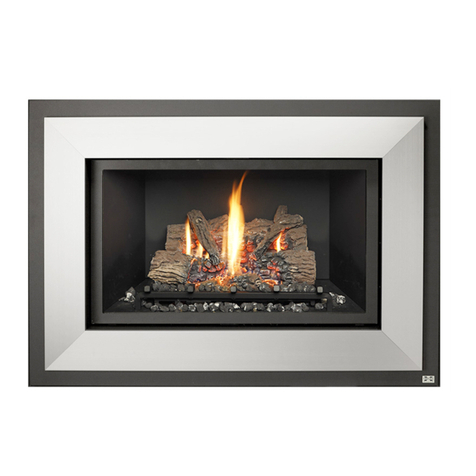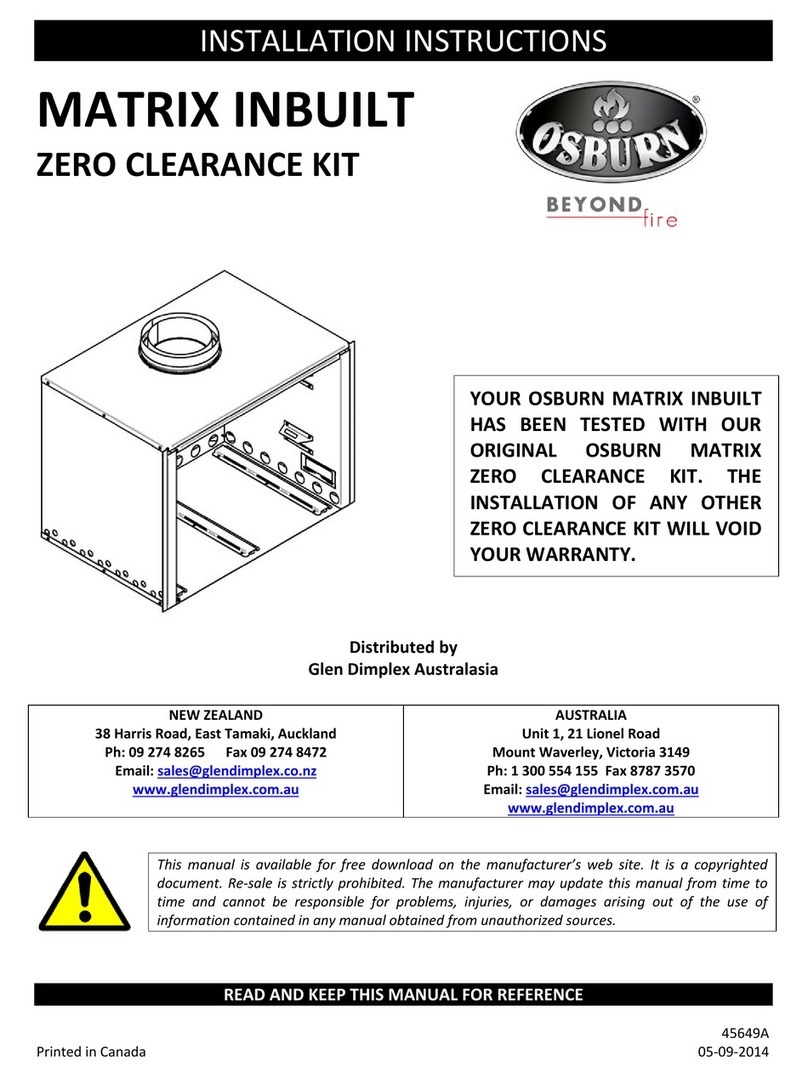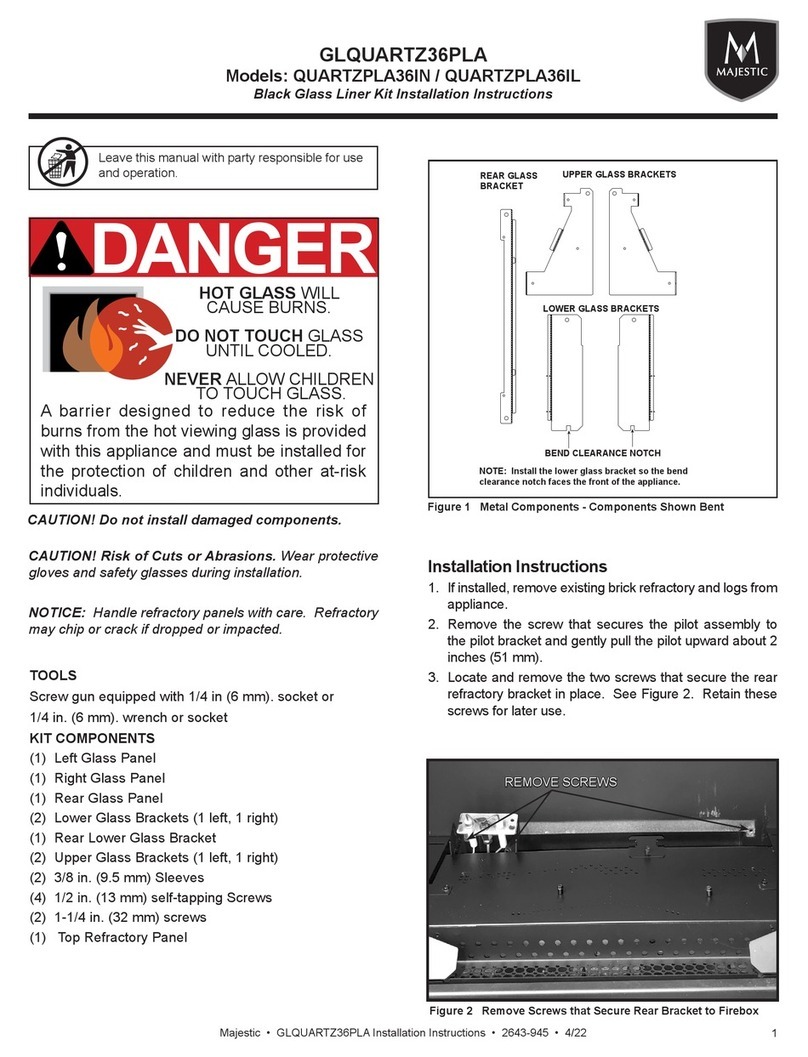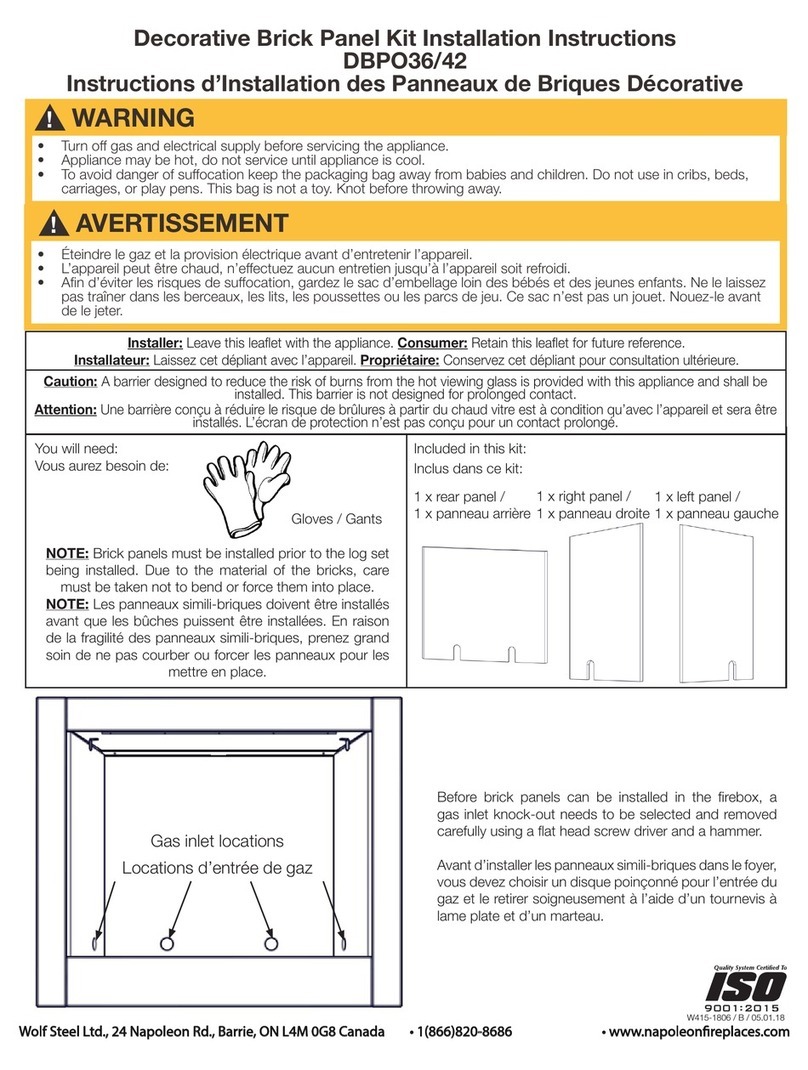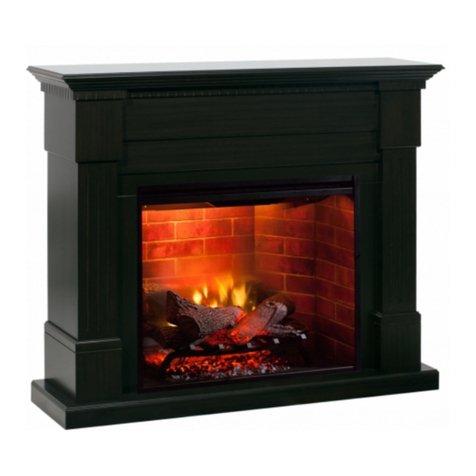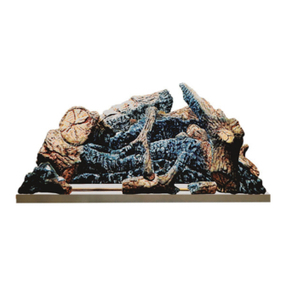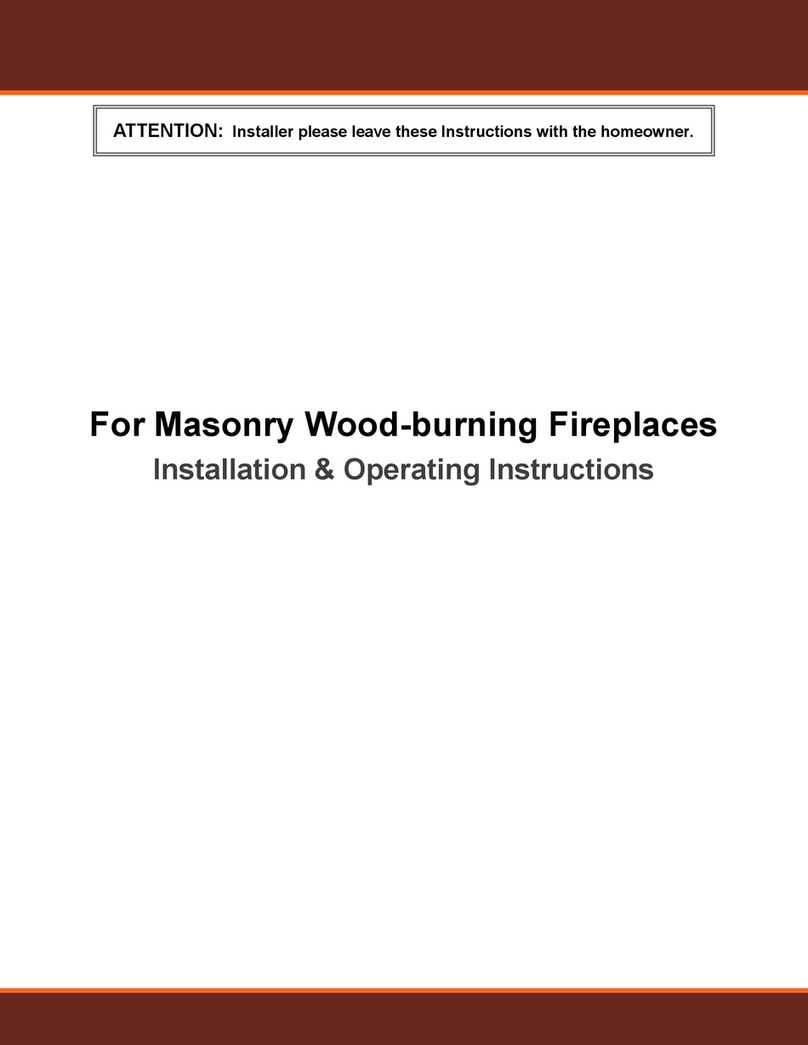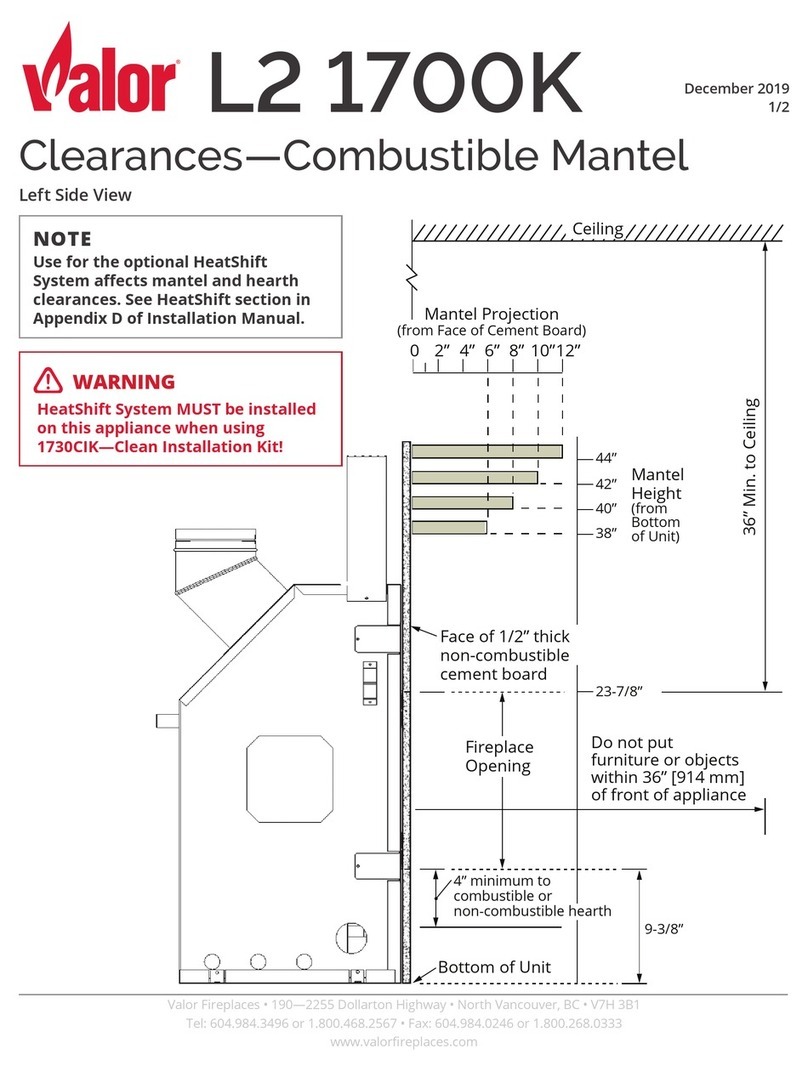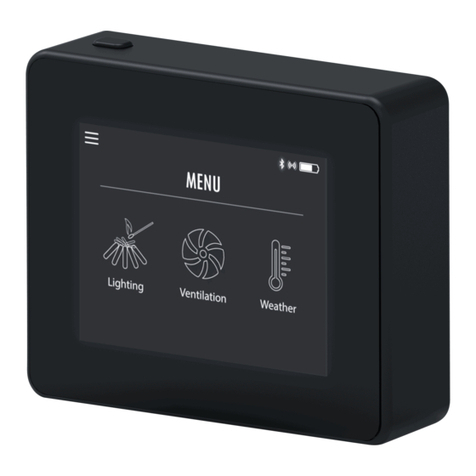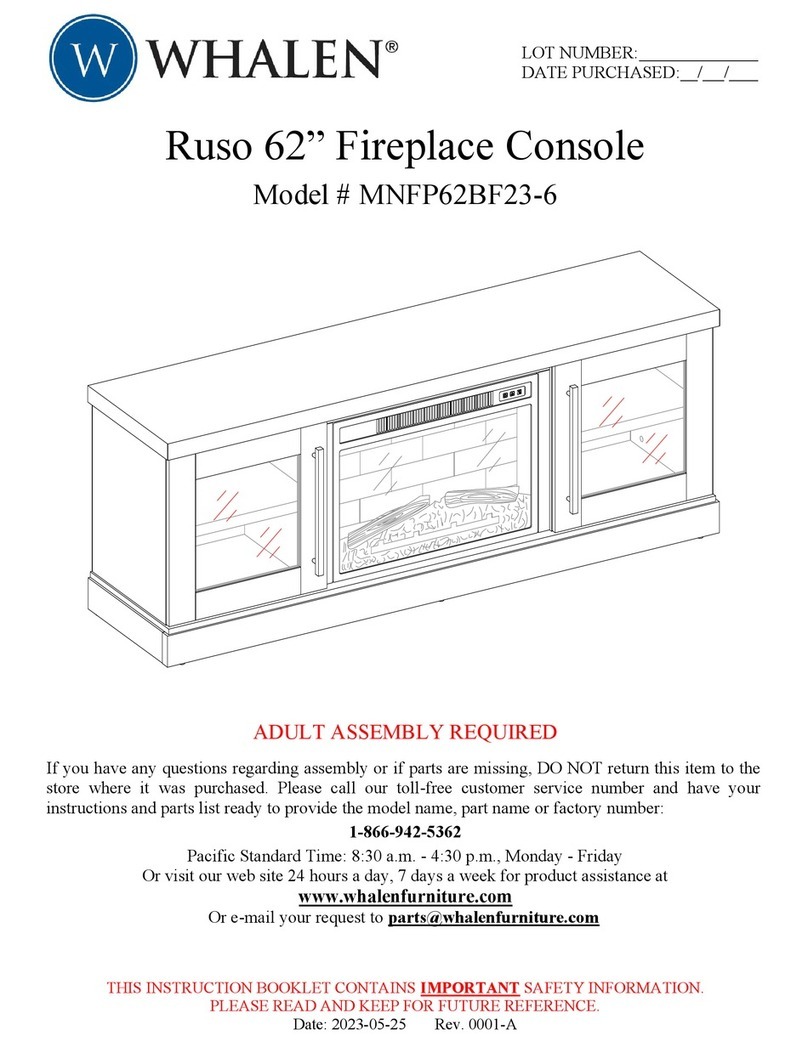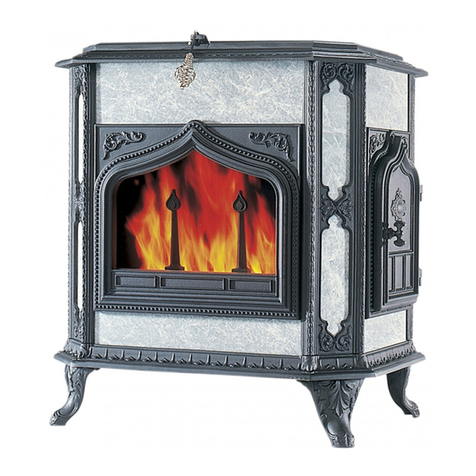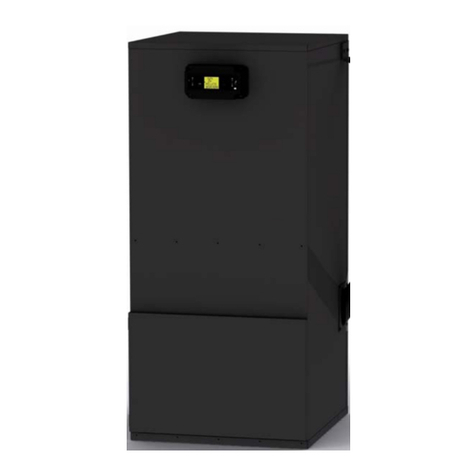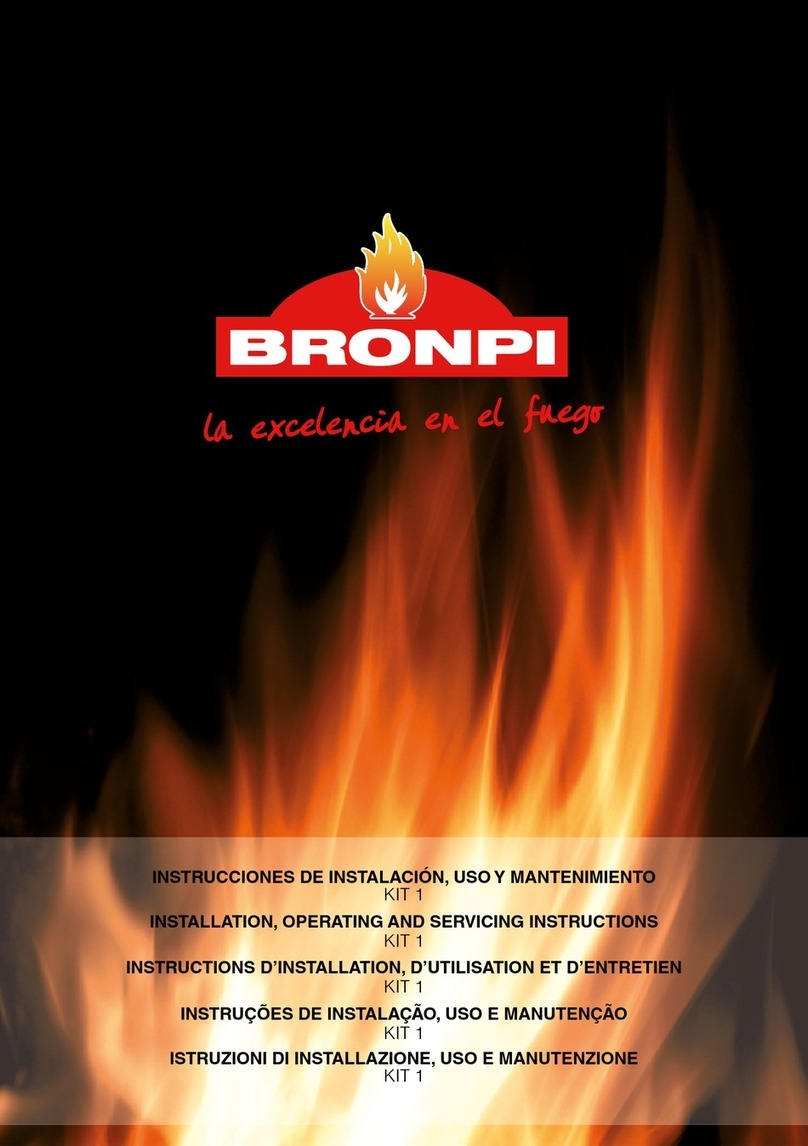
Page 3
Operating Instructions
CAUTION: Do not light a fire until you read and completely understand the Operating Instructions that follow. If you
have any questions or concerns, please contact CMC Dealer or Fireplace Doors Online before proceeding.
GENERAL SAFEGUARDS:
Do not burn trash, construction materials, pressure treated lumber and/or railroad ties in your fireplace. The intense
heat that these types of materials can produce can damage the Heat Exchanger Enclosure and the fumes from burn-
ing these types of materials can create a serious health hazard. Dry, seasoned hardwood is the recommended fuel.
CAUTION: CMC uses very high quality tempered glass but tempered glass is breakable like any glass. It is the opera-
tor’s responsibility to read, understand, and follow the instructions below and to exercise due caution. The most important
precaution is to keep the glass doors open when the fire is burning. The tempering process makes the glass stronger and
more resistant to heat and impact but not impervious. Avoid striking the glass with logs or fireplace tools. If tempered
glass does fail it breaks into small pieces. Glass pieces may fly about the area. Never sit, or allow children or anyone else
to sit, close to the glass when the fire is hot. Use a protective hearth rug or other suitable non-flammable protection in front
of the fireplace to protect wood floors and/or synthetic carpets. In the event that the glass should break, the resulting small
pieces could burn skin or damage flooring.
OPERATION:
IMPORTANT: The Blower must be running when the fire is burning. If the Blower fails or electrical power is lost, al-
low the fire to die and discontinue use until the Blower is repaired or power is restored. Leave the glass doors fully open
until the fire has burned out. Ignoring this advice can cause damage to the Heat Exchanger and/or the Blower.
GLASS DOORS & SCREENS: Heat Exchanger Enclosures are designed to be used with the glass doors open and
the screens closed when a wood fire is burning. You will get the maximum heat from your fireplace with the glass
doors open. The screens must be kept closed at all times when a wood fire is burning except when loading or main-
taining the fire. If wood smoke is noticeable in the room make sure that the Smoke Guard baffle is installed and the
blower speed is not set too high. Call your CMC Dealer for advice.
BURNING: Build and maintain small to moderate wood fires. Fireplace grates and/or andirons must be properly
sized to allow at least 5 inches of clearance between the fire and the enclosure.
○ Never leave the room with both the glass doors and screens open. Upon retiring for the evening, or leaving the
room for an extended period, the glass doors can be closed to provide maximum spark protection. Before closing
the glass doors ensure that the wood fire is under control and of moderate size or smaller. The fireplace flue
damper should be left fully open. Once the fire is completely extinguished, close the fireplace flue damper and
close the glass doors to minimize heat loss up the chimney.
○ Excessive heat can cause damage to the Heat Exchanger Enclosure and/or loss of temper in glass resulting in
glass breakage. A very hot wood or gas fire, hot coals, embers, ashes, and/or logs coming in contact with the
back of the enclosure can cause discoloration or more serious damage to the enclosure finishes. This type of
damage, caused by over-heating, is considered abuse and is not covered under warranty.
BLOWER: The Blower is equipped with a temperature activated switch (Snap Disk) and a Variable Speed Switch.
○ The thermal Snap Disk will turn the Blower on when the switch heats to 120°F and off when it cools to 100°F.
○ The Variable Speed Switch regulates the speed of the blower and therefore the volume of warm air it delivers.
▪ If the air coming from the air vent is too cool the blower speed is set too high relative to the fire.
▪ The Variable Speed Switch has an OFF position. Do not use the OFF function unless the Snap Disk fails. If
the Snap Disk fails have it replaced immediately by your CMC Dealer.
GAS LOGS: For fireplaces fitted with gas logs use the Heat Exchanger Enclosure designed for this purpose. Gas
Log Heat Exchanger Enclosures are intended for use with vented gas logs only. Do not use with Vent-Free gas
logs. Gas Log Heat Exchanger Enclosures are fitted with an oversize damper and are designed for heat transfer
suitable to the constant heat provided by gas logs. Heat Exchanger Enclosures used in combination with Gas Logs
must have the glass doors open when the Gas Logs are in operation to ensure adequate air flow to the Gas Logs.
The Gas Logs must be properly sized to allow at least 5 inches of clearance between the fire and the enclosure. Un-
like a wood fire that modulates heat output, gas logs can produce a lot of heat constantly over an indefinite period of
time. Burning Gas Logs with the glass doors closed can overheat the enclosure, the Gas Logs, the fireplace and
cause damage to any or all components. Read and follow all instructions provided by the Gas Log manufacturer.
MAINTENANCE:
CAUTION: The Heat Exchanger Enclosure and glass doors must be at room temperature before cleaning.
Smoke residue or soot accumulation on glass can be removed using glass cleaner or a mild household cleaner.
Avoid cleaners that contain ammonia. Spray on, let soak for a few minutes, and wipe clean. Repeat as necessary.
Heavier, long-term build up may require the use of a glass cleaner specifically formulated for removing wood smoke
residue. These glass cleaners are available from Fireplace Doors Online. Never use oven cleaner.
CMC uses high quality, heat resistant, Powder Coat finishes on Heat Exchanger Enclosures. This type of finish re-
quires only an occasional wipe with a damp cloth to maintain the factory finish. A mild household cleaner may be
used if necessary. Do not use cleaners that contain ammonia. Do not use harsh, strong, or abrasive cleaners.
Polished metal parts of the enclosure (brass, copper, etc.) have a clear lacquer finish to prevent tarnishing. Wipe
with a damp soft towel or dust cloth only. The use of metal polish or strong cleaners will damage the finish.

